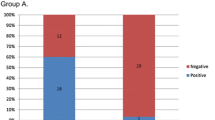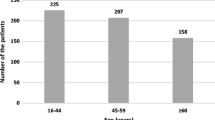Abstract.
Vertigo and dizziness are very common symptoms in the general population. The aim of this paper is to describe the physical and pharmacological treatment of symptoms characterized by sudden onset of rotatory vertigo. Acute vertigo can be subdivided into two main groups: (1) spontaneous vertigo and (2) provoked vertigo, usually by postural changes, generally called paroxysmal positional vertigo (PPV). Sudden onset of acute vertigo is usually due to acute spontaneous unilateral vestibular failure. It can be also fluctuant as, e.g., in recurrent attacks of Ménière’s disease. Pharmacotherapy of acute spontaneous vertigo includes Levo-sulpiride i.v. , 50 mg in 250 physiologic solution, once or twice a day, methoclopramide i.m., 10 mg once or twice a day, or tiethilperazine rectally, once or twice a day, to reduce neurovegetative symptoms; diazepam i.m., 10 mg once or twice a day, to decrease internucelar inhibition, sulfate magnesium i.v., two ampoules in 500 cc physiological solution, twice a day, or piracetam i.v., one ampoule in 500 cc physiological solution, twice a day, to decrease vestibular damage. At the onset of the acute symptoms, patients must lie on their healthy side with the head and trunk raised 20°. The room must be quiet but not darkened. If the patient is able to swallow without vomiting, it is important to reduce nystagmus and stabilize the visual field with gabapentine, per os, 300 mg twice or three times a day. The first step of the physical therapy of acute vertigo is vestibular electrical stimulation, that is to say, a superficial paravertebral electrical stimulation of neck muscles, aimed to reduce antigravitary failure and to increase proprioceptive cervical sensory substitution. PPV is a common complaint and represents one of the most common entities in peripheral vestibular pathology. While the clinical picture is well known and widely described, the etiopathogenesis of PPV is still a matter of debate. Despite the different interpretation of PPV etiopathogenesis, the maneuvers described by Semont, Epley, or Lempert and their modifications are undoubtedly effective. For this reason the first therapeutic approach in acute provoked vertigo must be by means of one of these kinds of treatments.
Similar content being viewed by others
Author information
Authors and Affiliations
Corresponding author
Rights and permissions
About this article
Cite this article
Cesarani, A., Alpini, D., Monti, B. et al. The treatment of acute vertigo. Neurol Sci 25 (Suppl 1), s26–s30 (2004). https://doi.org/10.1007/s10072-004-0213-8
Issue Date:
DOI: https://doi.org/10.1007/s10072-004-0213-8




